Key takeaways
- A digital fashion magazine combines multimedia elements for an immersive experience, showcasing trends and styles while fostering inclusivity by featuring emerging designers.
- Understanding trend analysis is key for creators to connect with audiences, anticipate changes, and enhance brand identity through informed design choices.
- Canva offers user-friendly design tools, collaborative features, and a vast template library that helps designers visualize trends and enhance creativity.
- Effective trend visualization relies on using appropriate color palettes, infographics for data presentation, and compelling storytelling to engage the audience meaningfully.
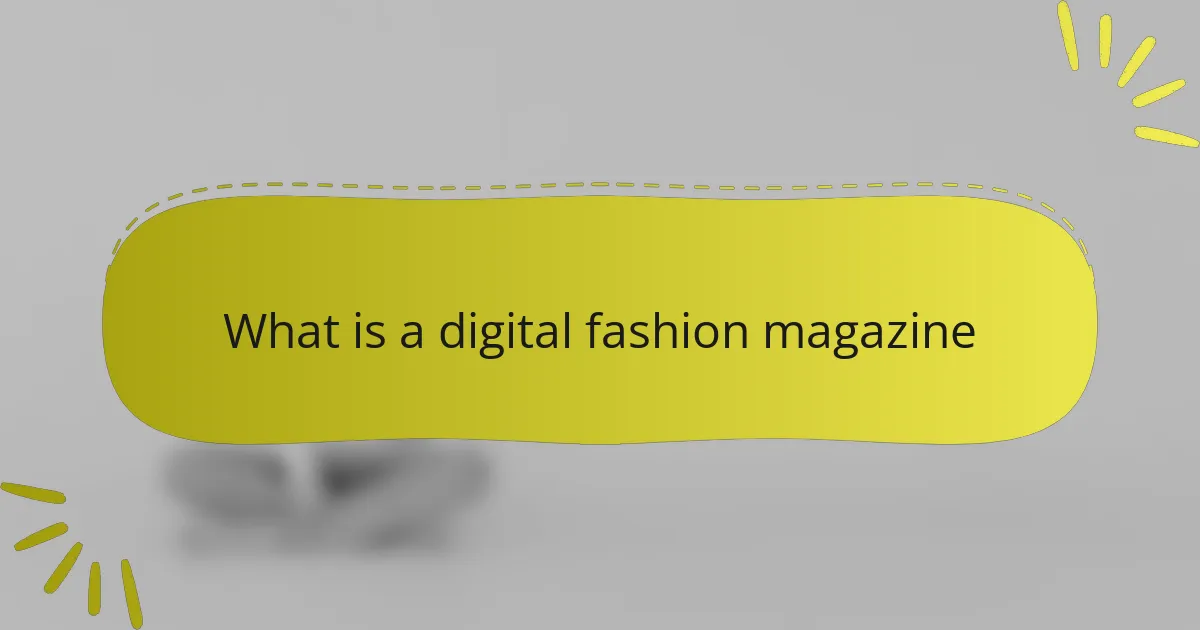
What is a digital fashion magazine
A digital fashion magazine is an innovative platform that showcases the latest trends and styles in fashion through a visually engaging format. Unlike traditional print magazines, these publications leverage multimedia elements, such as videos, interactive graphics, and social media integration, allowing readers to immerse themselves in the content. Have you ever flipped through a magazine and wished you could see a fashion show live? In a digital format, that experience is just a click away!
These magazines often cater to a specific audience, providing trend forecasts, styling tips, and interviews with industry professionals—all delivered at the pace of our fast-moving digital world. I remember the excitement I felt when I stumbled upon my first digital fashion issue; it was like opening a door to a world where fashion, technology, and creativity danced together seamlessly. Doesn’t it feel great to explore styles that resonate with your personal taste in such an engaging way?
Furthermore, digital fashion magazines have the power to democratize fashion. They allow emerging designers to showcase their work and connect with a global audience, breaking down barriers that often exist in the traditional fashion industry. As someone who values inclusivity and diversity, it’s inspiring to see how these platforms not only feature established voices but also amplify new ones. How do you think this shift impacts the way we perceive fashion today?
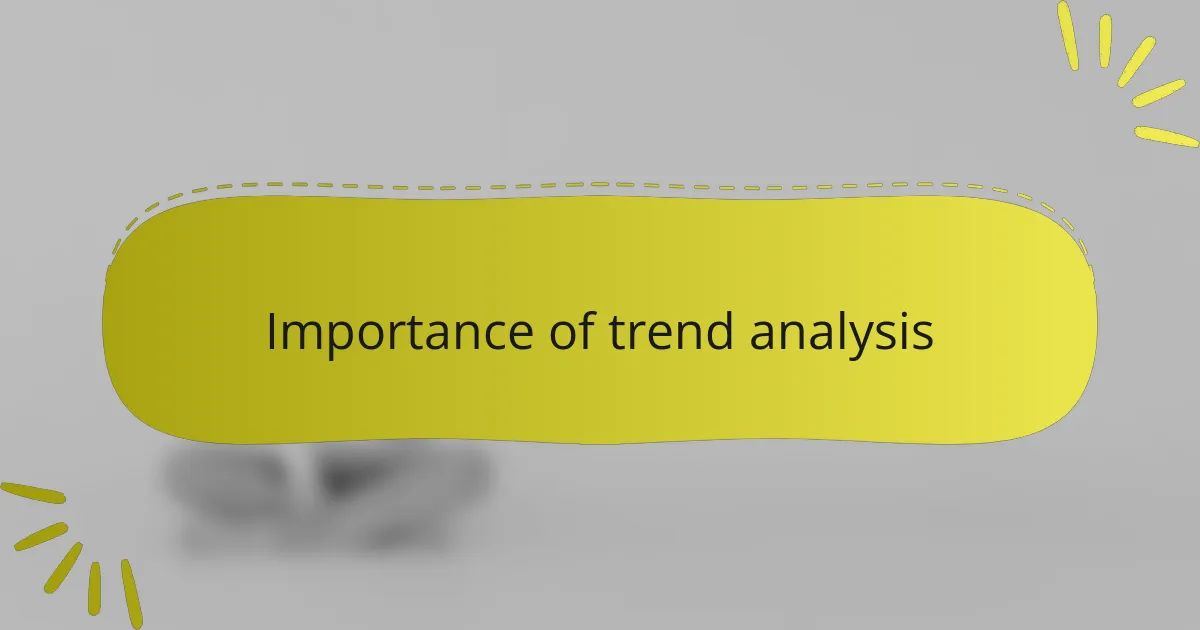
Importance of trend analysis
Understanding the importance of trend analysis is crucial in the fast-changing world of digital fashion. Through my experiences, I’ve observed that recognizing trends allows me to curate content that resonates with my audience. It’s not just about following the latest fads; it’s about predicting what will engage and excite viewers in the coming seasons.
One of the most exciting aspects of trend analysis is the opportunity to express creativity while staying relevant. Using tools like Canva helps me visualize these trends, whether it’s a color palette that reflects contemporary styles or layout designs that capture the essence of a movement. Engaging with trends fosters a deeper connection with my community, allowing me to create pieces that speak to their evolving tastes.
- Helps identify consumer preferences and market demands.
- Enables informed decision-making in design and content creation.
- Encourages innovation by blending past trends with future possibilities.
- Fosters a strong brand identity by aligning visuals with current aesthetics.
- Allows for timely responses to shifts in the fashion landscape.
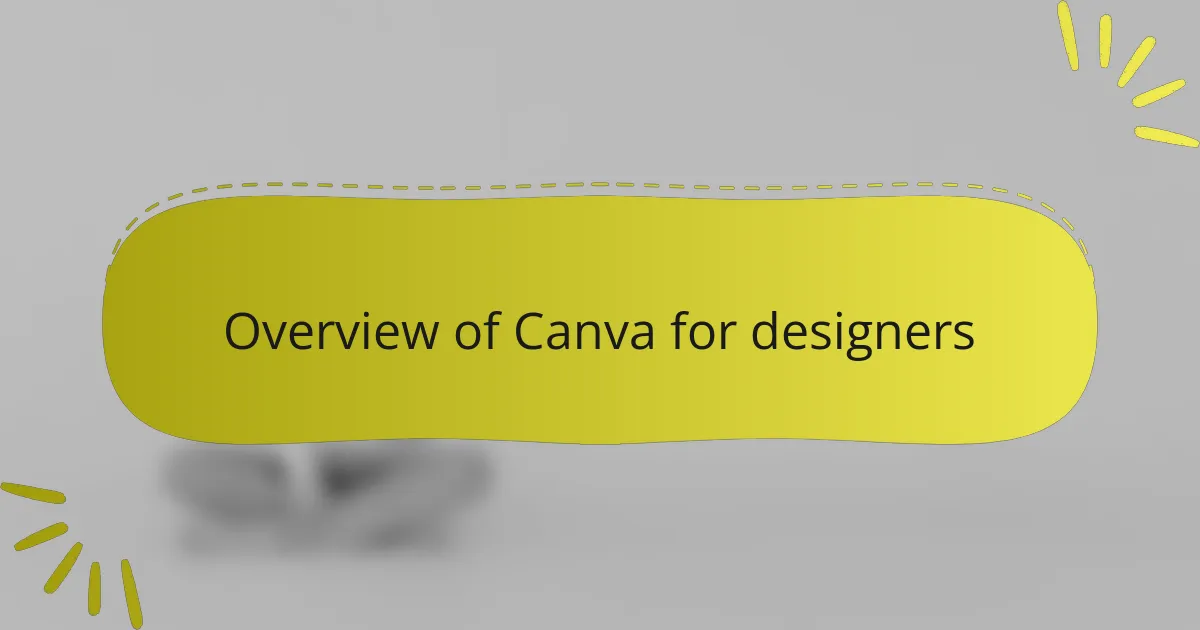
Overview of Canva for designers
Canva has truly transformed the way designers approach their projects. It’s user-friendly and accessible, allowing both seasoned professionals and beginners to create stunning visuals without the need for extensive training. I remember my first experience with Canva; I was amazed at how quickly I could construct a professional-looking layout for a digital magazine. The drag-and-drop interface makes it intuitive, and the vast array of templates can spark creativity in even the most self-doubting designer.
When it comes to collaborative work, Canva shines as well. I’ve often collaborated with other creatives on projects, and the real-time editing feature allows us to work in harmony. It feels rewarding to see our ideas come together seamlessly, and the platform encourages experimentation without fear of failure. This emotional connection with the design process makes Canva a tool that truly resonates with designers.
| Feature | Canva |
|---|---|
| User-Friendliness | High |
| Collaboration Features | Real-time editing |
| Template Variety | Extensive |
| Learning Curve | Minimal |
| Cost | Free with premium options |
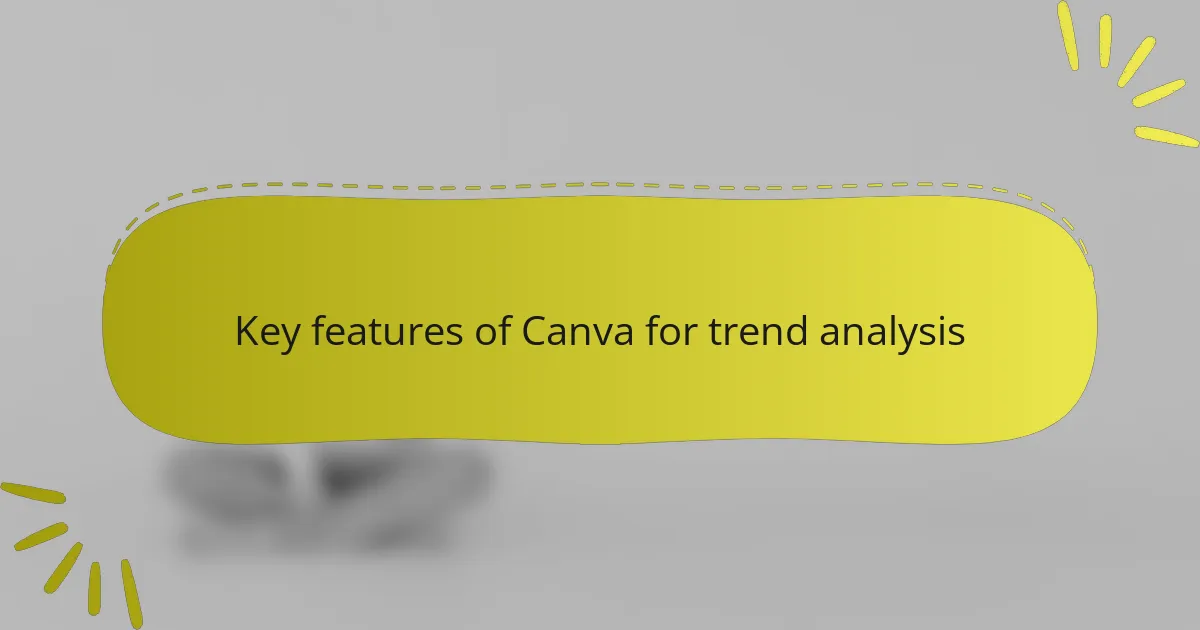
Key features of Canva for trend analysis
When it comes to analyzing trends with Canva, one key feature that stands out is its impressive library of templates. These templates aren’t just visually appealing; they’re designed to inspire creativity while helping to visualize emerging trends. I often find myself browsing through them, and it never fails to spark ideas for my projects. Have you ever experienced that moment of inspiration from a well-designed layout that just clicks with your vision?
Another significant feature is the extensive collection of stock images and graphics that Canva provides. This resource allows me to seamlessly incorporate current visual trends into my designs, and I love the ability to filter by style or theme. One time, while developing a piece on sustainable fashion, I discovered the perfect eco-themed graphics that brought my vision to life. It’s amazing how the right visual elements can elevate a concept and make it resonate with the audience.
Lastly, I can’t overlook the collaboration tools Canva offers. Being able to share designs and receive instant feedback from peers enriches the creative process. I fondly recall working on a project during a team brainstorm session; seeing how everyone’s input transformed the initial idea into something even better was a powerful reminder of the value of collaboration. How do you think interactive feedback shapes the design in the fashion digital space? It certainly gives me a fresh perspective!
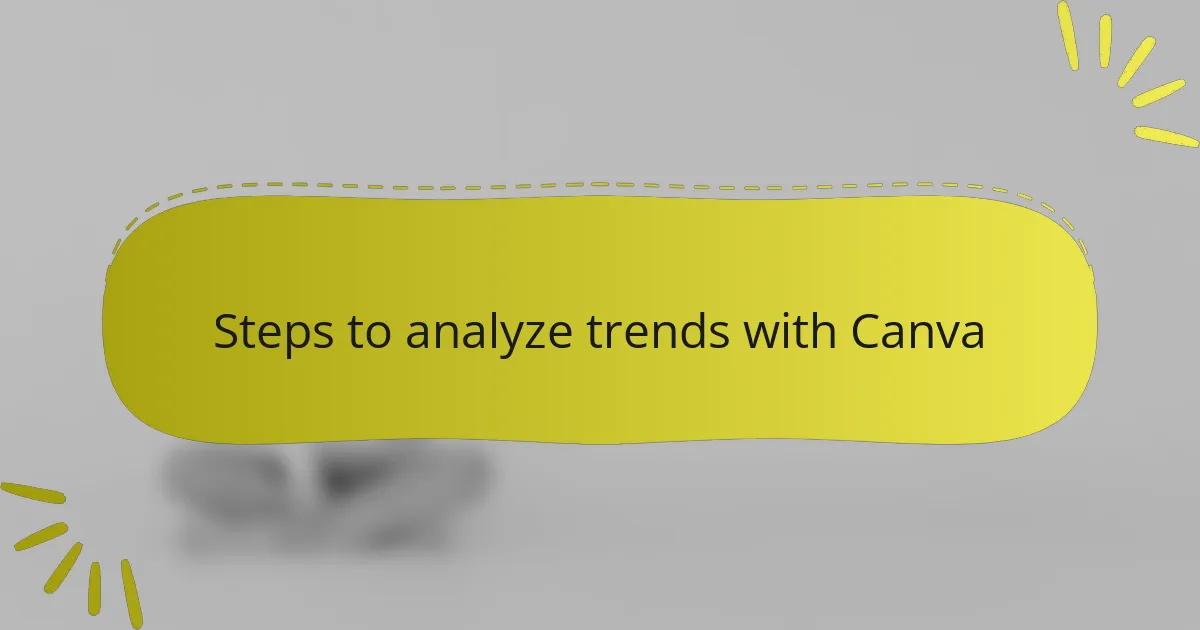
Steps to analyze trends with Canva
To effectively analyze trends using Canva, start by exploring the vast array of templates available. Whenever I browse these templates, it feels like diving into a treasure trove of inspiration. Each layout sparks new ideas, guiding me toward current styles and movements. Have you ever found that one design that perfectly encapsulates the essence of a trend? It’s exhilarating!
Next, utilize the stock images and graphics offered by Canva. This feature lets me infuse current visual trends into my projects with ease. I distinctly remember working on an article about bold color palettes; sifting through Canva’s collection helped me select vivid images that captured the trend perfectly. It’s fascinating how the right visuals can convey a concept much more powerfully than words alone. Have you tried leveraging images to illustrate a point in your work?
Lastly, take advantage of Canva’s collaboration tools. I’ve often invited fellow creatives to contribute ideas and feedback. This interactive process not only enriches the content but also fosters a sense of community. I cherish those moments when a simple idea evolves into something extraordinary through collaboration. Don’t you think that bouncing ideas off others can create unexpected opportunities for innovation?
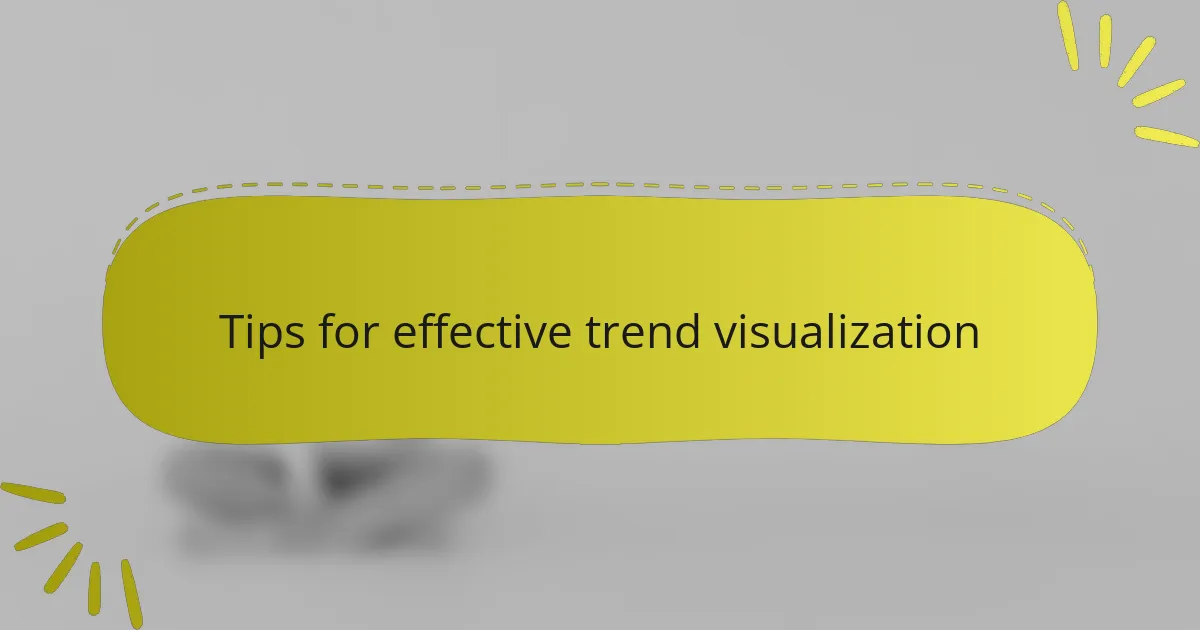
Tips for effective trend visualization
Using the right color palette is crucial for effective trend visualization. When I select colors, I pay attention to the emotions they evoke and how they align with current fashion trends. For instance, I once created a mood board for a summer collection, and the vibrant hues sparked a sense of excitement that perfectly matched the season’s lively spirit. How do you choose your colors to resonate with your intended message?
Incorporating infographics can also amplify your trend analysis. Personally, I find that presenting data visually not only makes the information more digestible but also reveals insights that might stay hidden in plain text. I recently designed an infographic showcasing the rise of sustainable fashion, and it transformed dry statistics into an engaging narrative that truly connected with my audience. Have you tried using infographics to tell your story?
Finally, remember that storytelling is at the heart of visualization. Each design should tell a story that reflects the trends you’re showcasing. I’ve learned that a compelling narrative can turn a simple visual into an impactful conversation starter. For example, when curating a piece on street style, weaving personal anecdotes of fashion influencers brought the visuals to life. It’s fascinating how stories can deepen the viewer’s engagement, don’t you think?